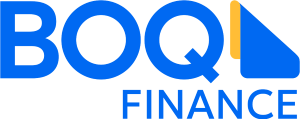
The Skyrocketing Pre-owned Equipment Market
One of the pandemic’s ongoing effects is the shortage of new machinery and business equipment available for purchase in Australia. This has caused disruption in many industries including agriculture, construction, earth moving and manufacturing.
As a result, many businesses have turned to pre-owned equipment, driving increased competition and a surge in prices.
Lingering effects of the pandemic on supply chains
Due to employee lockdowns and social distancing requirements, production from overseas factories has slowed considerably and there have been interruptions to the raw material supply chain.
Equipment now in high demand
Extensive rains, easing drought conditions and a bumper grain harvest have added to local demand for agricultural equipment, resulting in shortages and increased prices.
Meanwhile, the global pre-owned construction equipment market is being challenged by a surge in activity and an increasing focus on modern machinery to replace human labour. Combined with this, the additional pressures of major infrastructure projects and the Homebuilder scheme have resulted in huge strain on the Australian pre-owned equipment market.
Higher prices and better clearance rates are also being seen at farm clearing sales. COVID-19 has accelerated the move towards the online sale of pre-owned agricultural equipment at sites like AgTrader, and Machines4U.
Benefits of opting for pre-owned equipment
In addition to increasing the size of the equipment pool available and reducing delays on the completion of projects, pre-owned equipment may lose its market value more gradually than a brand-new item, which depreciates the moment you take possession of it.
If in good condition when you purchase it, pre-owned equipment can be particularly useful for short-term projects, or for testing new markets and can provide a cost-effective service for many years.
Things to watch for when buying pre-owned equipment
In some cases, buying pre-owned equipment requires much the same research and caution that you would use when buying a brand-new item, such as reading some online reviews for the specific product you are considering, and if you’re buying from a dealer, checking their reputation and references before you proceed.
Additional precautions include:
- Make sure you’re actually saving money. Under normal market conditions, you should pay less than the new price when buying pre-owned equipment. An online search for the new model will help you calculate a realistic secondhand price.
- Check the item's condition. It may be pre-owned, refurbished, or remanufactured, or could even be a never-used fire sale or residual stock. If buying online, always ask for photos and exact details.
- Ask for a warranty. If you’re buying from a dealer you may be able to get a warranty included in the purchase price, or pay for an extended warranty. Also check the dealer’s refund policy in case you’re not satisfied with your purchase.
- Work out a shipping method and cost. An online purchase may involve long-distance shipping. Investigate how much will it cost, and how long will it take. You may be able to save time and money by picking it up yourself.
- Dispose of your old equipment. A dealer may allow you to trade in your old equipment (if it still has a market value), to help reduce your purchase cost. Otherwise, consider retaining your old equipment as a source of spares which you can use, or sell online.
So how can we help you?
Getting the right finance for pre-owned equipment can have its challenges. At BOQ Finance we have a team of Equipment Finance experts that can help you with finance solutions tailored to your business needs.
Contact us today to find out more, email BOQF.DirectSales@boqfinance.com.au

